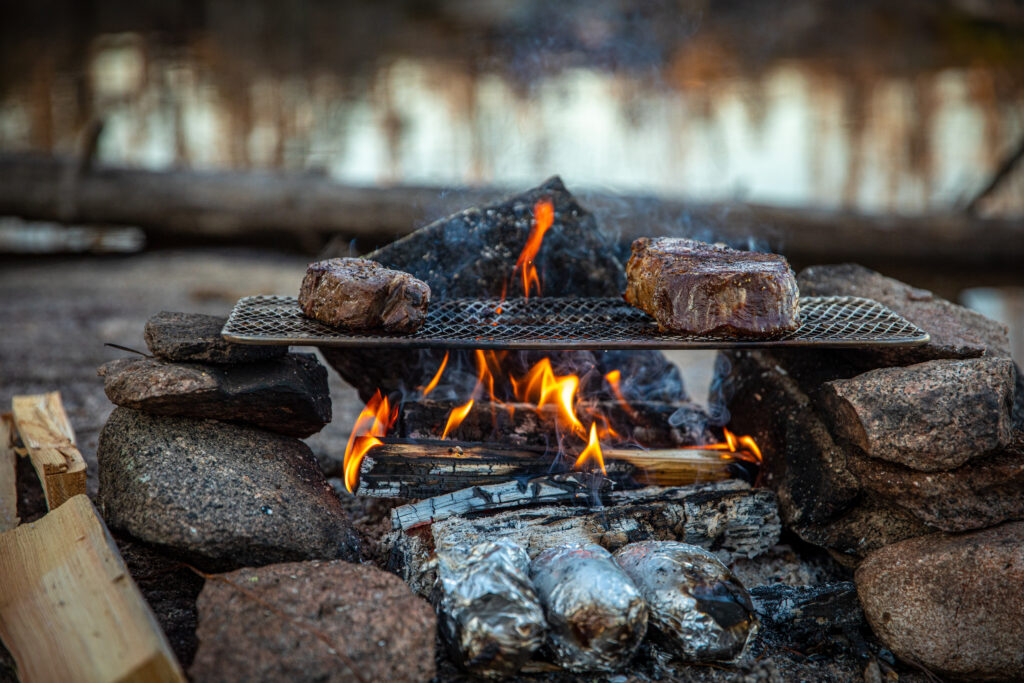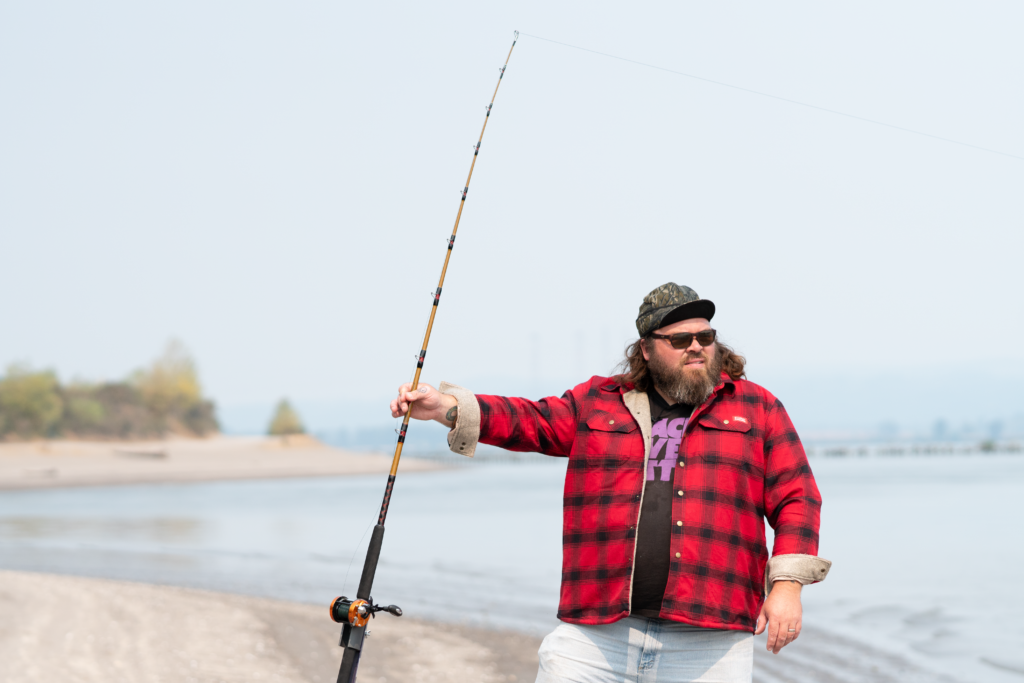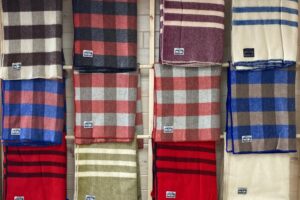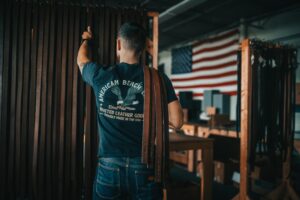Photo credit: Nate P., (@shorelunch_with_nate_p)
Outdoor cooking is having a renaissance right now. There are numerous high-quality outdoor appliances, implements, ovens, and pits available at the click of a button—probably as many, if not more, than indoor appliances, and some cost just as much! Now, I’m not saying that some of these devices aren’t awesome. An outdoor pizza oven that can get up to 900 degrees? Yes, please! A smoker that you can genuinely set, forget, and come back 16 hours later to a perfectly temped brisket? Sign me up! These are all very cool things, but to truly appreciate the wonder of modern outdoor food tech, you should have the know-how and experience of cooking the old-fashioned way: over a good ole hot, smokey homemade wood fire.
The Basics
Fire was invented more than 20 years ago…way over 20 years ago. Experts say it was 1.5-2 million years ago! Considering that the first backyard barbeque grills started popping up in the 1950s, humans have had a very long time to master the technique of cooking over flame. I thoroughly enjoy open-fire cooking and want to share three simple recipes (with my advice) for getting proficient and comfortable with this type of cooking.
First, you’ll have to build a fire. You’ll need plenty of dry wood and kindling. Separating your kindling sticks into three piles sorted by size is a solid way to begin. You’ll want to start with a small pile of shavings and tiny kindling pieces, small enough that they’ll light with a match. Once lit, continue to add pieces and go up in size as the fire grows. Don’t forget the air; blow or waft air to help accelerate that beautiful flame. Keep growing until you’ve got a self-sustaining little pyre that just needs new wood chunks added to burn. Grow the fire enough to have a nice bed of coals once the flames burn down. A hot coal bed is key to controlling temp and cooking your food.
The three methods I like best for cooking with an open flame are cooking in, on, or over the fire.
Cooking in a Fire
This is the simplest way to cook with fire. A wrapped packet of food is set directly in the coals and left to cook. No messing around. There are a million recipes you could try here; my favorite, though, is beets. Beets are good—they’re earthy, hearty, and delicious. They’re also straightforward to cook.
Clean the beets up, chop off the root before tossing them in olive oil, and wrap them in a tin foil packet. Get it as airtight as you can and throw it in the fire. Let them hang in there for a while! I left some big beets unattended in a coal bed for two hours once, and they came out perfect.
With that being said, you might need to cut some char off the outside, but who cares! This is outdoor cookery. I like my beets al dente, done and tender with a bit of nice toothiness, so check them with a skewer for your liking.
Once the beets are cooked and cooled down, chop ’em into chunks and mix them with arugula, fresh lemon juice, a splash of vinegar, oregano, blue cheese crumbles, crushed pistachios, salt, and pepper. Boom! Legendary camp menu. Vegetarian too…if that’s your speed.
Cooking on a Fire
Cooking on fire will require a cast iron skillet, tongs, and something to grab the pan with. Maybe a stove glove or an old flannel shirt? It doesn’t matter. Just grab something to protect your hands with when you grab the 8,000-degree iron handle.
Cooking on fire can be done with the pan right on the coals, or, if you get crafty, grab some wood, rock, rebar, or chunky shims to cobble together and raise or lower your pan. This method is best for foods that can be seared on high heat. Let’s look at the mighty scallop for this.
Scallops are great for cooking outdoors. They love a high-heat sear and can be eaten rare, so the chances of burning them are slim. When you buy them, make sure you get dry-pack scallops. This means they have yet to be pumped with chemicals to make them appear bigger. Dry-pack scallops are a little more expensive but a lot better to eat!
To prep, pat the scallops dry and set aside. I like any protein to be at room temperature before entering it into the pan. Get your pan ripping hot over the coals and add a high heat cooking oil; I use canola. Put in your scallops, and don’t crowd the pan. Let them sear for a full two minutes until you see the bottom start to brown. Flip them, add a couple of pats of butter to the oil, and give them one minute on this side. Serve with what? A beet and arugula salad.
Cooking Over a Fire
Cooking over flame is simply grilling. For this method, you’ll need a grate and a ribeye. Removing a barrier between meat and heat allows little tendrils of flame to rise and char the steak when it releases rendered fat into the coals. You’ll want the grate to be 6–8 inches above the coals. Make sure it’s cleaned and well-oiled with canola oil. An oil-soaked flannel scrap will work nicely.
Once you’re ready and your room temperature ribeye has been liberally salted, put it right on the grate and get ready to flip every 30 seconds until you’ve built a nice crust and the internal temp is 100 degrees.

The most crucial step is to remove the steak and let it rest, covered with tin foil for at least 10 minutes. You won’t be sorry because you just made the best surf-and-turf meal you’ve ever had. Congratulations!
We’ve covered a lot, but I’m confident you’re prepped to cook over any flame put in your way. So, what do you say? Grab your beets, scallops, and steak, and let’s get cooking.







